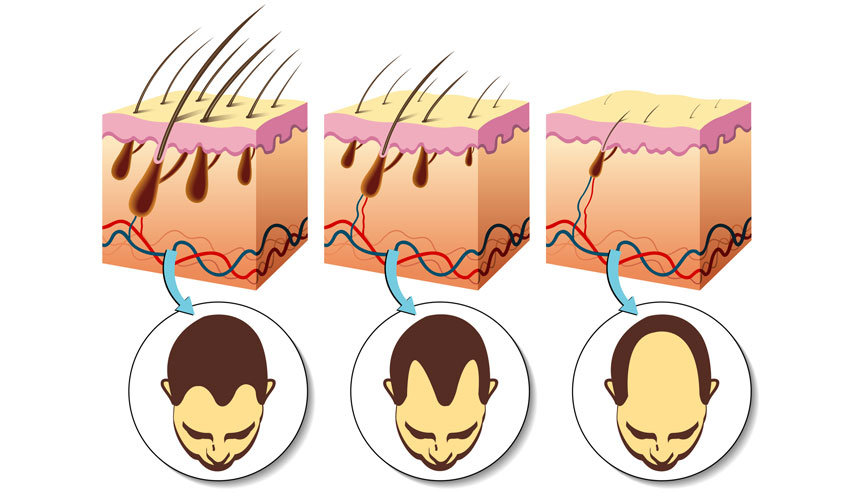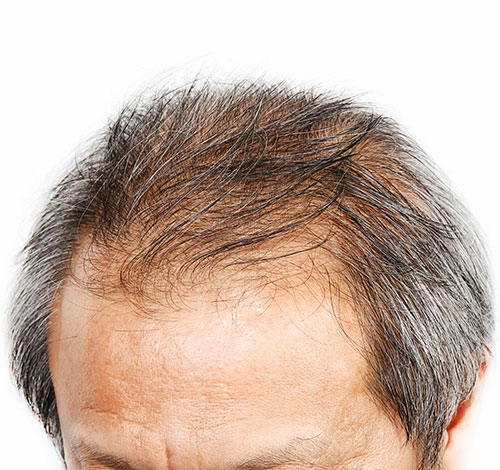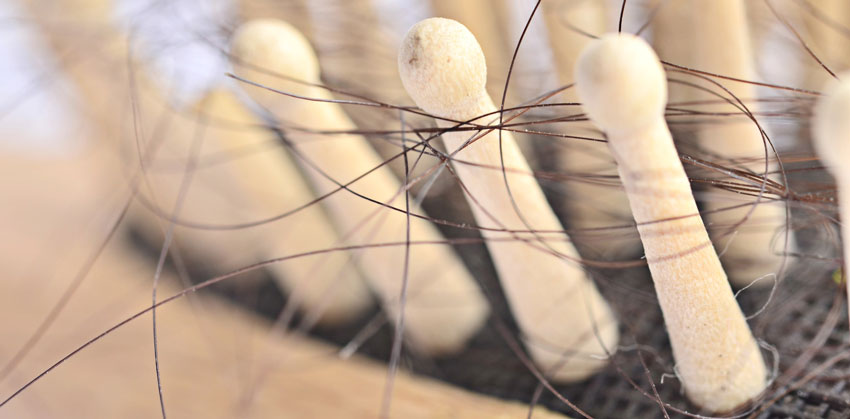What is baldness?
In men, hair loss typically begins with a progressive thinning of the hairline at the temples and the top of the scalp, while usually retaining a band of healthy hair at the back and sides of the head, the so-called “crown.”

In women, baldness usually causes overall thinning on the top of the scalp. Today, the cause of baldness is no longer mysterious, although many myths and misconceptions still persist. It has been scientifically confirmed that important factors contributing to this phenomenon include hormones, genetics and the environment. The main culprits in excessive male hair loss are androgen hormones.

In men, baldness is not caused by excess hormones but by the hair’s increased sensitivity to the effects of these hormones; therefore, only predisposed follicles are affected. The result is increasingly thin and weak hair, with a tendency to fall out.
There is also a genetic predisposition: strong heredity determines greater sensitivity to male hormones and can cause severe baldness to appear as early as youth. The genes for baldness are inherited from both parents, but recent data suggests that the more "damaging" genetic contribution comes from the maternal side. Additionally, poor diet, stress, smoking, certain diseases or the use of medications can also be contributing factors.
Hair loss: when should you be concerned?
Moderate hair loss is considered physiologically normal. Male and female hair is subject to continuous renewal and falls out when the follicle has already produced its replacement. Up to 100 hairs may be lost per day, but it is important to pay attention if the phenomenon lasts too long, especially if accompanied by other symptoms, such as even slight thinning at the temples or the classic “bald spot” on the crown.
YOU SHOULD BE CONCERNED WHEN:
• Hair loss exceeds 100 hairs per day;
• Hair loss continues for a long time (more than one month);
• Thinning appears in critical areas, with visible scalp.

That male hair loss should not be underestimated is shown by the fact that suffering from baldness, especially at a young age, has serious psychological repercussions, particularly in social relationships. Unfortunately, many people risk baldness because they ignore the symptoms or believe it to be a natural consequence of aging, when in fact they could maintain healthy and strong hair simply by acting in time and consulting a specialist. Today, in fact, scientific research in trichology allows for scalp assessments to determine the causes of increased hair loss and to intervene early before it becomes a serious problem with modern and reliable solutions.
PRP Hair: what is it
PRP is the acronym for “platelet-rich plasma” used in cases of early-stage baldness. It is a modern, minimally invasive technique aimed at stimulating follicular metabolism and cell regeneration by injecting platelet-rich plasma into the areas affected by hair thinning.
This technique is based on the principle that stem cells in the hair bulb have receptors that promote the growth of the hair itself. Since blood contains many platelets rich in growth factors that help self-repair the body, the patient’s own blood is used, processed appropriately to obtain a platelet-rich compound capable of stimulating hair follicles that are still present but dormant or weak to start producing hair again.
PRP for hair is proving to be one of the best methods for treating male and female baldness and is now successfully used in many aesthetic medicine clinics worldwide.
How does PRP work?
A PRP session lasts approximately 30–45 minutes and begins with the collection of a small amount of the patient’s venous blood (20cc), which is placed into special vials and processed in a specialized centrifuge to isolate the blood components without damaging them. At the end of the process, the PRP (platelet-rich plasma) is separated and ready for use.
The PRP is then drawn into a syringe and injected into the areas of the scalp affected by hair thinning using ultra-fine needles in a grid pattern. The treated area may be locally anesthetized.

The entire procedure is carried out in a sterile surgical outpatient environment and depending on the type and extent of the early-stage baldness, additional sessions may be scheduled monthly or bimonthly. At the end of the therapy, the patient can immediately return to their normal activities.
PRP Hair: how soon does hair grow back?
Hair regrowth begins to appear as early as 2 months after the first session and peaks around 6 months. Typically, a “maintenance” session is performed once or twice a year.
Does it work 100% of the time?
In medicine, nothing can be guaranteed 100%. To achieve a high success rate, a prior diagnostic evaluation by a specialist is always necessary to study the case’s specific characteristics and establish the most appropriate clinical path. Only then can patients eligible for treatment have a very high probability of resolving their baldness issue permanently.
Are there any side effects?
No, the PRP technique has no side effects because it is completely natural and involves only the reprocessing and reinjection of autologous material that is, material taken from the patient’s own body containing growth factors that interact with the stem cells already present. The risk of rejection or allergic reactions is zero, because the body's delicate immunological balance is not altered in any way.
© All rights reserved


